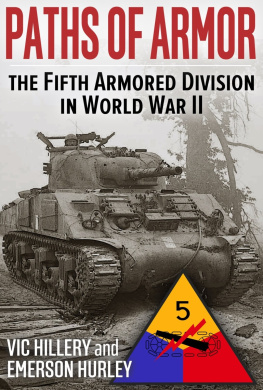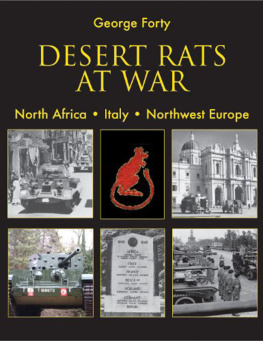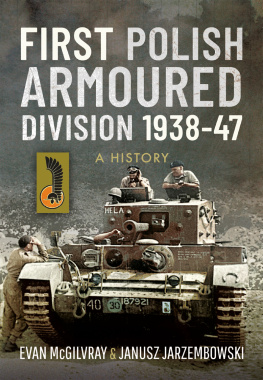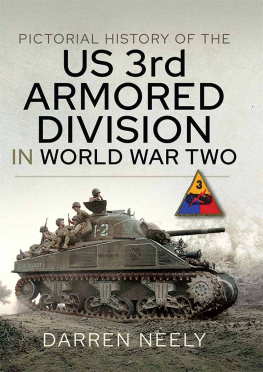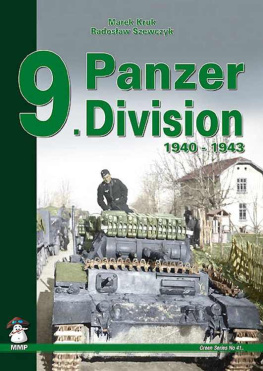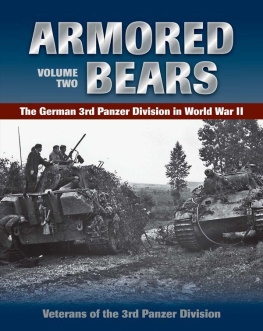

EUMENES Publishing 2019, all rights reserved. No part of this publication may be reproduced, stored in a retrieval system or transmitted by any means, electrical, mechanical or otherwise without the written permission of the copyright holder.
Publishers Note
Although in most cases we have retained the Authors original spelling and grammar to authentically reproduce the work of the Author and the original intent of such material, some additional notes and clarifications have been added for the modern readers benefit.
We have also made every effort to include all maps and illustrations of the original edition the limitations of formatting do not allow of including larger maps, we will upload as many of these maps as possible.

PATHS OF ARMOR
The Fifth Armored Division in World War II
Paths of Armor was originally published in 1950 by Albert Love Enterprises, Atlanta, Georgia.
TABLE OF CONTENTS
Contents
DEDICATION
To all those, the living and the dead, who fought with the Fifth and faced each day new and unknown but common perils, this book is respectfully and humbly dedicated.
Foreword
The Fifth Armored Divisions record of achievement is unsurpassed by that of any other division. And the ratio of its casualties to such achievement is the lowest in the entire United States Army.
It was the Fifth Armored which devised the married formation of tanks and infantry; it led the Normandy breakthrough; it sprang the Falaise trap which meant the death of the Seventh German Army and the Field Marshal who commanded it. The Fifth Armored was the first division to reach the Eure River, the Seine, and the Our; it cut off near Mons thousands of Germans, later taken by the 1 st Infantry Division. In one incredible day, it crossed the stubborn battlefields of World War I and outraced fleeing Germans from Nyon to the Belgian frontier. Throughout that day the route of its advance was a roll call of past battles: Cambrai, Le Cateau, St. Quentin, Vimy Ridge, Valenciennes.
The Victory Division was the first to enter Germany. It breached the Siegfried Line early in September, while other parts of our armies were still demonstrating before it, or skirmishing within it. The Fifth Armored cleared the Hrtgen Forest, after the job had been begun by five infantry divisions. In four days it overran its given area of the Rhineland. Three weeks later, within a few hours after crossing the Rhine, its engineers were maintaining bridges at Hamelin where:
The River Weser, deep and wide,
Washes its wall on
The southern side.
A few days later the division was on the Elbe, with bridge sites chosen and reconnaissance parties in boatsnearer to Berlin than any combat group in the American Army.
While the Fifth Armored was accomplishing these feats, the American public heard little about the division because of the tight censorship under which it operated and because it did not possess an elaborate public relations staff.
This history is now published to cast some light on these outstanding achievements. It tells how they were accomplished. It is also published as a tribute to the divisions Commanding General, Major-General Lunsford E. Oliver (now retired). The record of the division, we all agree, merely reflects his wise, patient, intelligent and always aggressive leadership. It is only borrowing a phrase from the greatest of Books to say that General Oliver created the division in his own image.
No foreword would be complete without a word of appreciation; first and foremost to Vic Hillery and Major Emerson F. Hurley, without whose efforts, over 30 months time, this history could not have been written at all. Lon MacFarland, Dave Batey, Bill Daniel all spent a great deal of time getting it published. Lt.-Col. Fred E. Ressegieu and Harry Entrekin helped very much and Erling Foss took many of the photographs used. And probably most harassed of all was Lou Filas, our Association Secretary, who had to type, retype, edit, and reedit the script, to decipher strange hands, and never once lost his good humor in doing so.
In the name of and on behalf of the Fifth Armored Division Association we thank them all; and we thank all of you who contributed source material in the form of letters, stories and whose actions we have been writing about.
We hope you like the book.
MARTIN PHILIPSBORN, JR.
(President, 5 th Armored Division Association 1948-1949)
A Message from General Oliver
This is the story of the Fifth Armored Division; the division which led in the drive that created the Falaise pocket, which was the first of all the Allied units to set foot on German soil and to pierce the Siegfried Line, which in the closing days of the war went out a hundred miles in front of the supporting infantry and fought its way to the Elbe River, closer to Berlin than any other Allied unit, and which was stopped there, not by the Germans, but by order from Ninth Army. Necessarily there can be mentioned in this story only a few of the many acts of heroism which made this record possible. The long months of training for the task ahead, the drudgery, the endurance of cold and wet and fatigue, that contributed to this record could not possibly be adequately portrayed. To have participated with you, men of the Fifth Armored Division, in all these things has been the greatest privilege of my life.
It is my hope that in the years to come the same spirit which drove you onward to your achievements in this war will cause you to take the lead in your communities in doing everything possible to make our country a better place in which to live, and to improve our international relations and prevent future wars, so that our heroic dead shall not have died in vain.
Major-General LUNDFORD E. OLIVER
I A STAR IS BORN
It was 1 October 1941.
On Europes Eastern Front Wehrmacht forces under Field Marshal Gerd von Rundstedt broke through the Red Armys primary defenses as the Germans concluded the first week of their offensive against the Crimea. North and east of Dniepropetrovsk, on the line toward the industrial Donets River basin, German armored divisions captured several Russian batteries, destroyed 45 of their tanks and encircled four Soviet infantry divisions.
In England inhabitants of Newcastle dug the dead and wounded from the rubble of the still-smoldering buildings that has been crushed and burned by a devastating Luftwaffe attach during the previous night.
On the red clay wasteland of Kentuckys Fort Knox, far from all this clash and smoke of battle, a group of soldiers lined up and came to attention. Some were regular U.S. Army men, others 12-month selectees, others active-duty reserve officers. They had been gathering here in tent city all during the previous month of September. Now their numbers were sufficiently great officially to form the nucleus of an army division.
This was activation day of the Fifth Armored Division. Appointed to command the new group was an officer from the Armored Force Replacement Center. He was Brig.-Gen. Jack W. Heard (later promoted to Major-General).
In his address to these assembled soldiers General Heard declared that this division would have a brilliant future. It seemed a rather rash and optimistic prediction. For if this division ever did come to grips with the enemy its battle opponents would be these Wehrmacht units which even then were already battle-seasoned and were winning brilliant engagements on the Eastern Front. Certainly it would be an exceptional accomplishment if this Fifth Armored Division even succeeded in holding its ground in any future encounter with any one of these German units.
Next page
